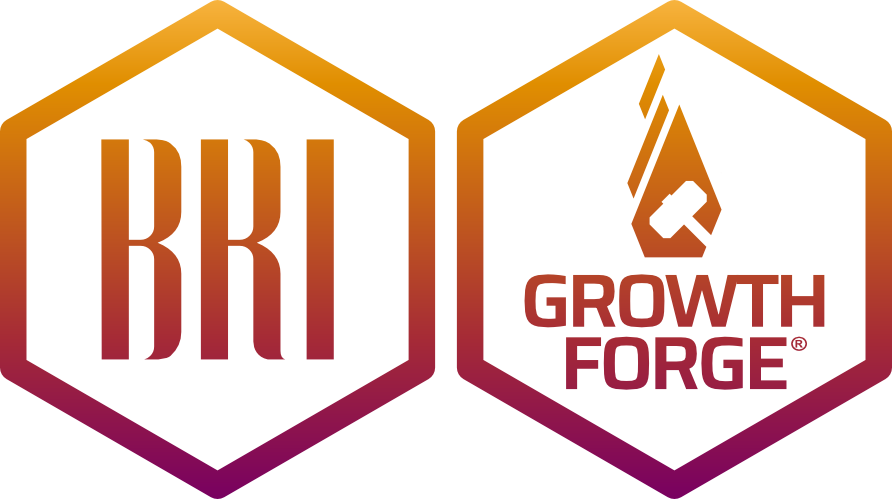For many companies, increasing innovation has become a strategic priority. As technologies increase efficiencies for established firms, they can also lower entry and scaling barriers for new entrants, driving the pace of competition. Established companies don’t want to be or be perceived as complacent or be disrupted by more innovative new challengers, so many are turning to innovation to drive new growth, new business models, or new operational efficiencies. They often set up new Innovation Labs or Groups to demonstrate their commitment to innovation, but often don’t have a clear model for how to measure them. The lack of clear metrics or accountability for innovation practices can create a tension that becomes like a large elephant in the room that innovation leaders often don’t want to address.
If the leaders of these innovation groups don’t know how success is defined or measured, how can they manage the effectiveness of the group? Sometimes the leaders of these groups avoid defining or committing to accountability because they know that innovation is inherently uncertain and do not want to be held accountable for what they cannot control. We think this is a mistake, that there are meaningful metrics for innovation that can be actively managed, and that failure to establish them often ultimately ends with the dismantling of the innovation group within a few years. What’s worse, the institutional memory of a failed attempt at organized innovation creates a negative bias toward attempting it again in the future with corrective changes.
A Predictable and Unfortunate Pattern
We have seen a similar pattern repeating itself in many different companies, but it typically takes several years to play out, so it’s very difficult for innovation leaders to recognize while they are in it. The pattern looks something like this:

- Catalyst & Kickoff - Often there is a catalyzing event that will motivate company leadership to make a big push with innovation. This could be a big move by an existing competitor, the emergence of a disruptive new entrant, or the notable and enviable results of big innovation from another player in the market. Whatever the catalyst, company leaders decide that the status quo and current business trajectory is not good enough and that innovation is the key to changing that trajectory. They will often create a new innovation group, or re-task a functional team to lead innovation for the company. However, this is often when companies make a fatal mistake. They start without having clear and measurable objectives for their innovation efforts. Nonetheless, they will demonstrate their commitment to innovation with a big internal and sometimes external announcement and fanfare.
- Fill the Pipeline - Honeymoon Phase - The Innovation group or practice is up and running, and the initial focus is on ideation – collecting, filtering, sorting and prioritizing innovative ideas from within the company, outside the company or both. The innovation leaders and the executive sponsors know that innovation is somewhat of a numbers game and that there will be fall-out along the way, so they are excited to see the volume and eagerly start investing in several of the most promising concepts. In our experience, generating ideas for innovation is the easiest part of the innovation life cycle, but often gets more focus and attention than it deserves, because it’s easy to quantify, even if the quantity is not a direct indicator of successful outcomes.
- Initial Skepticism - After about a year, some of the initial concepts will have failed or been pruned out, but there will be a few that are getting traction and showing promise. However, the timelines may start pushing out as the realities of execution complexity are realized, or the size of the opportunity may be scaled back as adoption rates get more realistic with better data from early market testing, or operating expenses exceed initial estimates. This may have been expected, but established business groups or functional teams may be claiming better potential returns from similar investment. In addition, the innovation leaders may be realizing that the front-end of their pipeline is not as robust as it should be, so they put some renewed energy into more ideation to keep the pipeline going. Now, maintaining a mix of front-end exploration simultaneously with later stage projects starts stretching the available resources.
- Moderation - In the second or third year, the realized results are likely to still be meager in comparison to the established core business, and none of the innovation projects has proven to be the game-changing homerun that everyone was hoping for. Innovation leadership asks for patience, but investment or funding support may get scaled back to a more acceptable loss, or some projects with lesser perceived potential are cut to enable greater investment in the few projects that still look promising. But the executive sponsorship is disappointed that the results are not more significant and are taking too long. They start putting energy into alternative strategies.
- Shutdown - Around the third year, the executive sponsorship is disappointed with the results. Sure, some of the projects have gotten traction and moving in positive directions, but the results are too small to make a noticeable impact on the company’s bottom line, or the synergies with the core business assets are not significant enough, or the success is being claimed as the result of contribution from an existing business group or functional team. So, the innovation group gets shut down, and the established business groups or functional teams are chartered to drive their own innovation. Or, in an effort to drive bigger results more quickly, management changes the innovation strategy to focus externally on strategic investment in nimble startups or potential acquisitions.
This is a generalization. The specific circumstances or rationale may be different, or the timeline is faster or slower, but the general pattern seems to happen with surprising frequency. In many cases, the decision to curtail investment may be absolutely appropriate, but the real problem is in failing to define the right objectives and success metrics for the innovation effort from the beginning and appropriately aligning expectations with the level of risk and constraints implied by the execution and operational model.
The Innovation Measurement Myth
There are innovation advocates and leaders that believe and say that innovation cannot and should not be measured. One of their arguments is that innovation is driven by creativity, inspiration, and free association and those attributes can be fostered or enabled, but not quantitatively measured and managed. Innovation requires experimentation, trial and error, and that failures are to be expected and constitute discovery and learning opportunities. These arguments are all true, but they do not justify pursuing innovation without discipline and clear success metrics.
It is appropriate and important to recognize that innovation should not be measured or managed with the same metrics as established businesses or operations, but innovation can and should be managed with discipline and accountability to appropriate metrics. This month’s issue of the Harvard Business Review has a great, in-depth article on the topic – “The Hard Truth About Innovative Cultures” by Gary P. Pisano.[1] And we talk about the requirements for changes to reward and recognition systems for innovation in a blog article a few months ago, “Risk, Rewards & Recognition in Innovation.”
Innovation is not magic. It’s not the result of innately brilliant visionaries or a fanciful work environment. It’s the result of skills and methods developed and honed for the task. When done properly, it’s an application of the scientific method (hypothesize, experiment & gather evidence, evaluate, refine & repeat) combined with economic investment discipline (evaluate risk-adjusted potential return vs. investment required and acceptable loss). Each of those respective fields can be managed with great discipline and clear metrics. If it matters to your business, it should be measurable. If you expect the business to invest resources, they should generate a positive return, not necessarily in direct bottom-line impact, but in some explicitly defined and quantifiable metric.
Need a little help thinking about metrics differently? Check out “How to Measure Anything: Finding the Value of Intangibles in Business” by Douglas W. Hubbard.[2]
How to Measure and Manage Innovation Accountability
Innovation may not be predictable, but the same can be said for mature business operations. You can’t always predict what competitive alternatives may emerge or how the market will behave and evolve, but companies manage and measure those things every day. You may not be able to prescribe or plan the timing or scope of a home-run innovation, but you can define an acceptable level of loss to invest in developing options. You can measure the risk-adjusted value of those options and selectively invest in them based on the potential increase in option value net of the investment required, etc.
Start with the objectives or goals of the innovation effort. Why are you doing it? What’s the catalyst? What are you trying to accomplish? Try to define what success looks like in quantifiable terms and then work back from there to define the interim indicators. However, be careful. It’s critical that you measure the right things. We often see metrics like the number of innovation ideas or concepts, but at best, that’s a very indirect indicator of something more important and meaningful, like real option value created. The wrong metric can be worse than no metric at all because it can drive behaviors that are actually counter to your goals.
Don’t try to finalize your innovation metrics in one sitting or meeting. It’s important enough to take your time and do it properly. Take a first crack at defining your key metrics, then let them sit for a week or two and revisit with fresh and critical eyes. Can they be practically measured? Do they potentially create any counterproductive incentives? It’s also a good practice to set up in advance, some planned review points quarterly or semi-annually to make sure that your metrics are guiding the right behavior towards your goals and adjust them if needed. Some other examples of metrics beyond option value creation could include things like opportunity exploration efficiency (how much time and investment are required to reach a preliminary option value), wasted investment avoidance or bounding the downside risk for failed projects, etc.
In business innovation, metrics will often come back to some form of top or bottom line financial impact, but there are other values that come from innovation that may not be as easy to quantify into dollar value, but can be measured and managed against their inherent value such as learning & discovery, which are quantified based on how much you are willing to invest to obtain them via innovation or by alternative means.
Summary
The point of this story is not to say that innovation groups should forego the efforts of creating an environment and culture that embraces creativity, opportunities for shifting mindsets, and facilitate cross-discipline networking and association in favor of strict financial analysis and bean counting. Those are all positive contributors to a more innovative environment. But for innovation within a business, where success is ultimately measured by survival in a highly competitive market, they are not enough. They must be complemented with disciplined and measurable results that support the business’s key objectives, or they will inevitably disappear.
Need some help? We’re happy to help you with anything from setting up your innovation practice, specific help on defining or tuning your metrics, or helping with an innovation practice “tune-up.” Click on the button below to contact us.
Works Cited:
[1] Gary P. Pisano, "The Hard Truth About Innovative Cultures” Harvard Business Review, January-February 2019 Issue. [Online]. Available: https://hbr.org/2019/01/the-hard-truth-about-innovative-cultures.
[2] Douglas W. Hubbard, " How to Measure Anything: Finding the Value of Intangibles in Business” John Wiley & Sons; Later Printing edition (2010).





